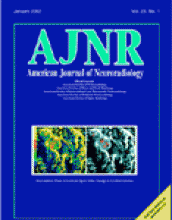No longer simply a research tool, dynamic contrast-enhanced MR imaging has become a clinically useful tool in brain imaging. T2 or T2* changes during the bolus passage of a paramagnetic contrast agent through the cerebrovascular system are converted to concentration values, and indicator dilution theory is applied to calculate a number of hemodynamic variables. Since Rosen et al first reported dynamic contrast-enhanced MR imaging of the human brain in 1990 (1), tremendous progress has been made in the use of the technique for noninvasive assessment of cerebral vascular physiologic behavior. Cerebral blood volume (CBV) measurements indicate the vascularity of lesions and can be used to identify and characterize brain tumors. Tumor capillary blood volumes measured by dynamic contrast-enhanced MR imaging have been shown to correlate with and predict glioma grade and hence provide insight into tumor malignancy and potential for recurrence. CBV measurements also may provide information on tumor angiogenesis that could be critical in detecting early tumor recurrence, developing novel antiangiogenic chemotherapeutic agents, and monitoring treatment response. Cerebral blood flow (CBF) measurements complement MR diffusion measurements in assessment of stroke by revealing the volume of tissue at risk, the so-called ischemic penumbra.
Dynamic contrast-enhanced MR imaging represents an important transition in radiology from a purely anatomy-based discipline to one in which physiologic patterns and tissue microstructure also can be investigated. Like diffusion and functional MR imaging, dynamic contrast-enhanced MR imaging provides quantitative maps that complement the purely anatomic information available from conventional MR imaging. Dynamic contrast-enhanced MR imaging–derived hemodynamic maps offer a new dimension to imaging in which both anatomic structures and cerebral microcirculation can be depicted with superior spatial resolution. In vivo measurements of regional hemodynamics offer tremendous research and clinical opportunities. It is important to remember, however, that the underlying theories of tracer kinetics are based on a complex set of assumptions that may or may not prove valid in a heterogeneous biological system such as the brain.
In this issue of the AJNR, Jackson et al (page 7) introduce another variable, relative recirculation (rR), derived from dynamic contrast-enhanced MR imaging that may reflect the degree of vascular tortuosity and disturbances in blood flow within brain tumors. The authors believe that rR represents “inadequate and deranged blood flow” and is independent and distinct from CBV. They found that the skewness of rR correlated with glioma grade and concluded that rR may be a surrogate marker for angiogenesis. This mathematically technical work represents an important field of research that may have a tremendous impact on how brain tumors are monitored clinically and how therapeutic efficacy is measured.
Traditionally, tumor size and enhancement margins, measured from static anatomic images, have been used to assess therapeutic response. This approach has been problematic, because contrast enhancement is nonspecific, and it is difficult to differentiate active tumor and therapy-related necrosis. There is therefore an acute need for objective variables that can be used to assess tumor response accurately so that toxic and ineffective therapies can be discarded and alternative, potentially active therapies can be initiated.
Jackson et al have found an interesting empiric correlation between rR skewness and tumor grade. Unlike CBV and CBF measurements, however, the biological meaning of rR is unknown. Is it related to contrast agent leakage due to blood-brain–barrier disruption, disturbance in flow dynamics due to tortuous vasculature, or both? Interpretation is further complicated, because it is the skewness of rR, rather than rR itself, that correlates with tumor grade. Without knowing what rR is measuring, it is difficult to regard it as a reliable arbiter of successful therapy. Their hypothesis that “abnormalities in contrast recirculation provide independent information” from CBV measurements also must be treated as provisional.
Like other dynamic contrast-enhanced MR imaging variables, rR measurements raise the question of how the technique should be used in the everyday practice of neuroradiology. The postprocessing methods are computer-intensive, and the variables are not obtained directly from MR systems but from off-line workstations with sophisticated computer algorithms. For this and other similar methods to have a clinical impact, we need some means of standardization so that comparisons can be made among different institutions performing dynamic contrast-enhanced MR imaging as part of routine brain tumor imaging. Also, the variables measured should be referable to image maps that reveal the distribution of values; after all, MR imaging is, and always will be, an image-based technique.
In conclusion, we should continue to develop and validate new MR methods of measuring physiologic variables that can provide insight into understanding the pathophysiology of brain tumors. As the authors point out, the clinical role, if any, of the rR measurements is as yet unproven. Ahead lie the far more difficult tasks of correlating dynamic contrast-enhanced MR imaging–derived variables with histopathologic findings, standardizing imaging acquisition and data processing among different institutions, validating the robustness and accuracy of the variables in everyday clinical practice, and, ultimately, improving the lives of patients with brain tumors.
- American Society of Neuroradiology







